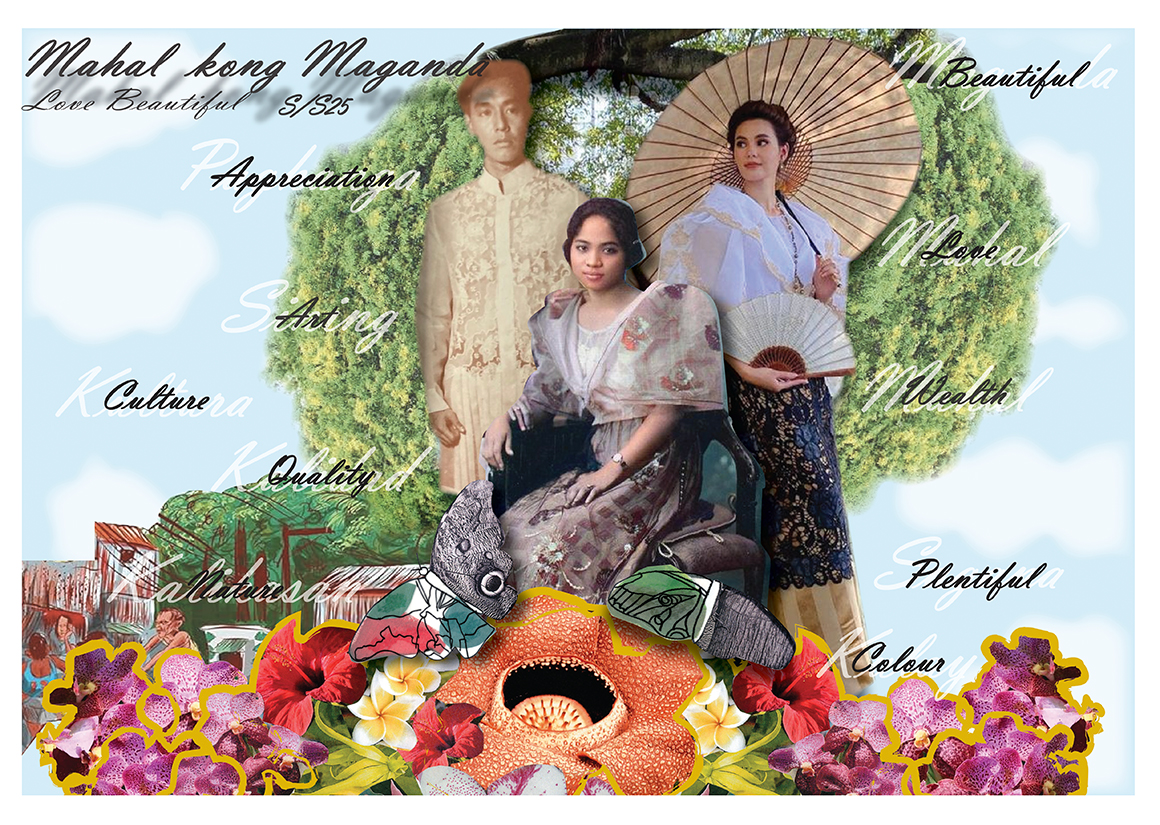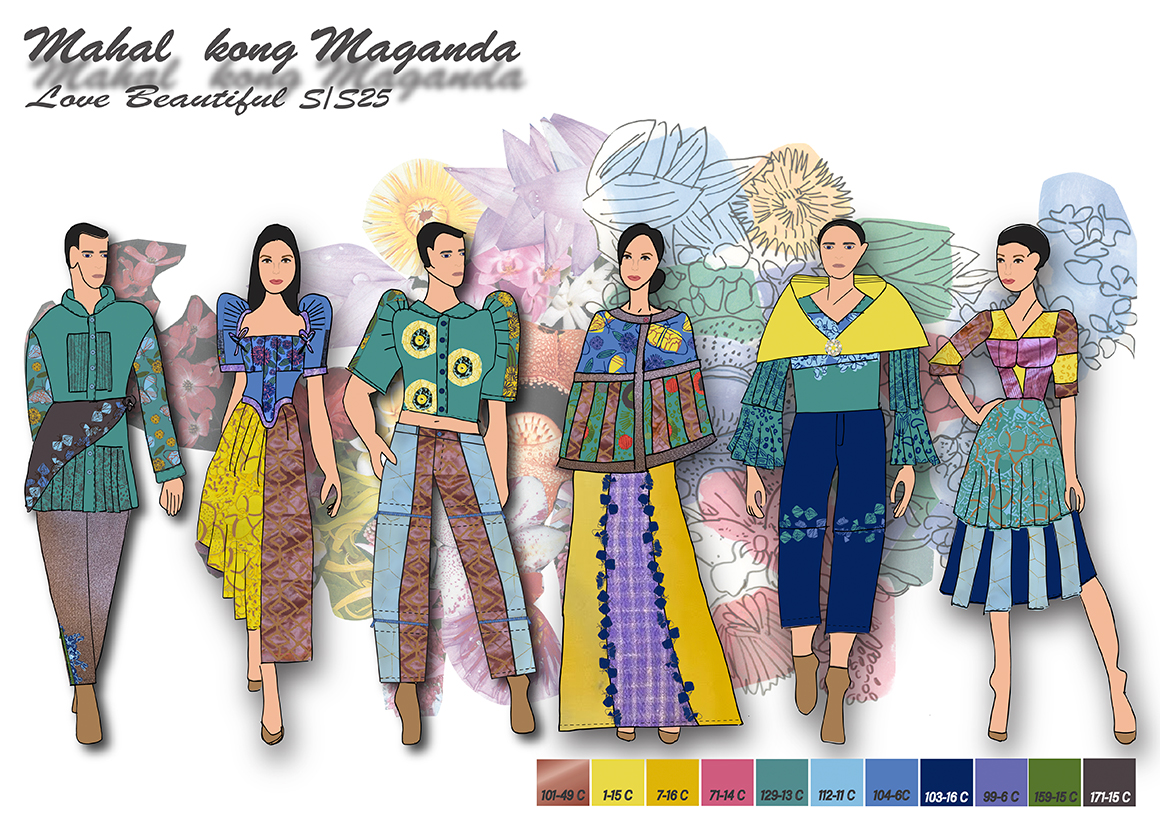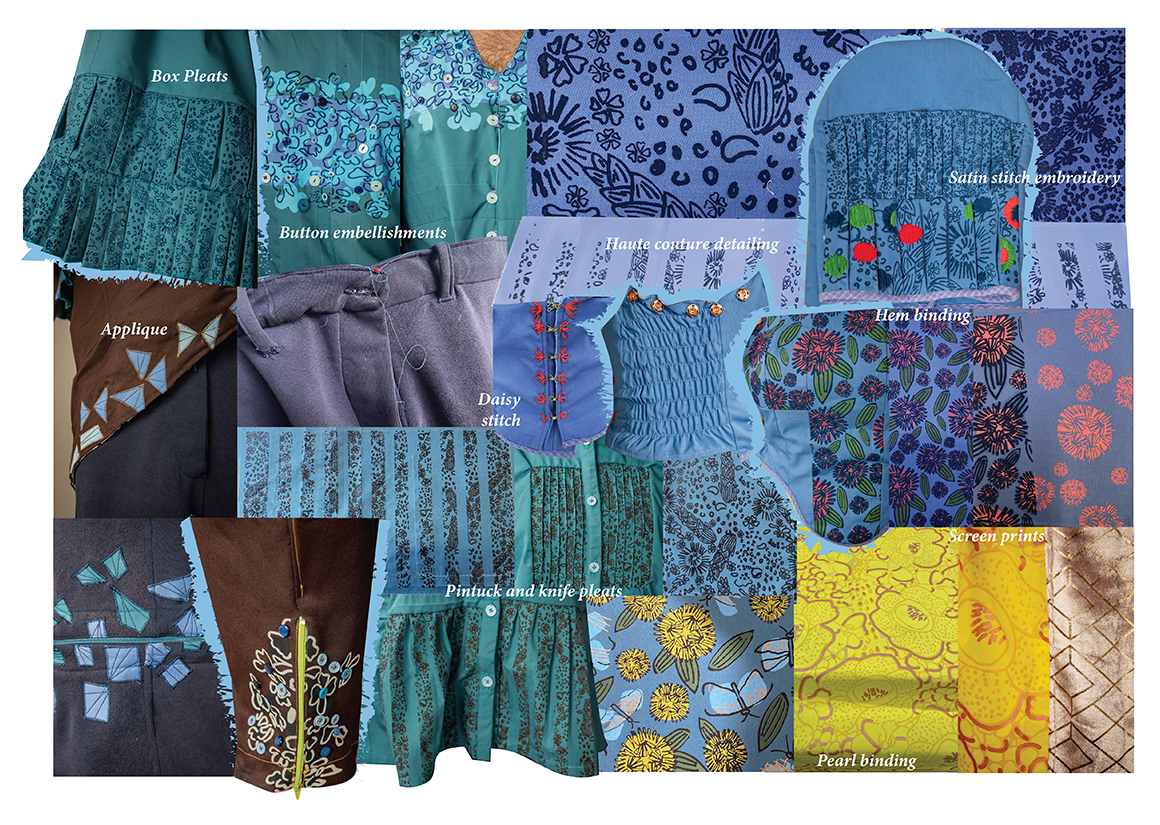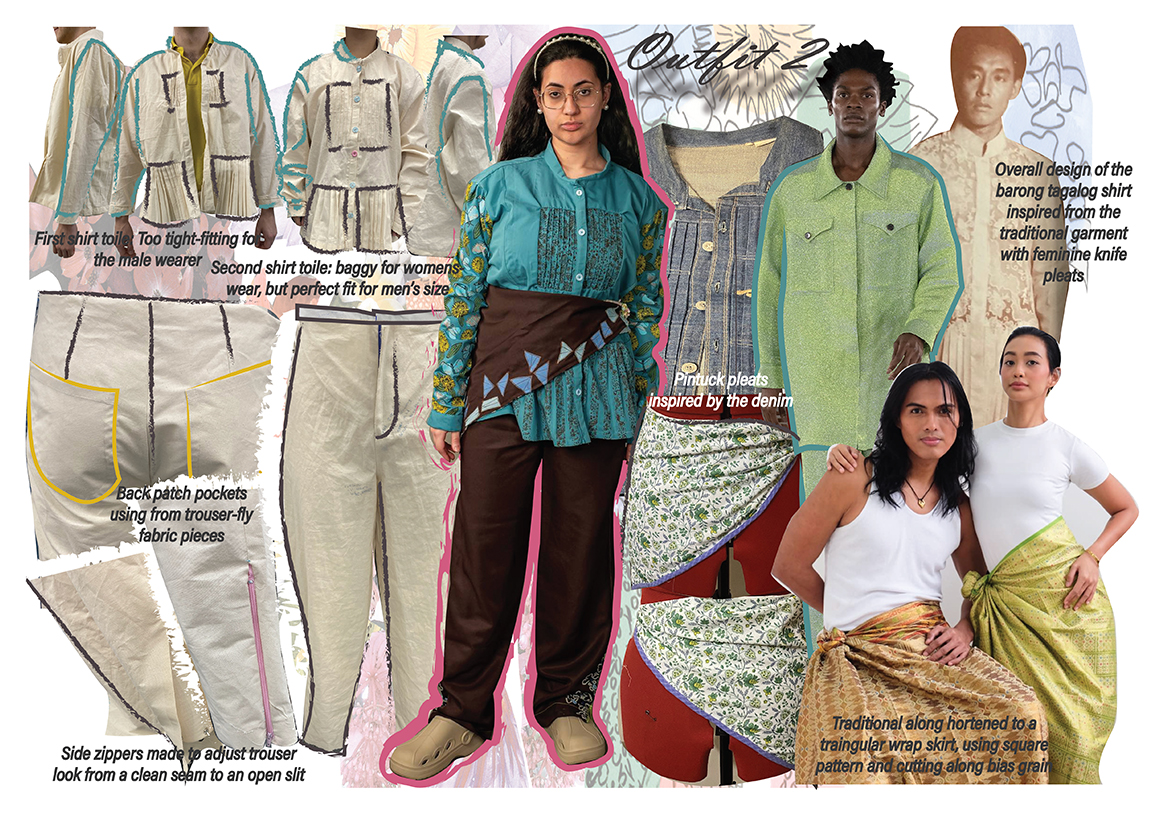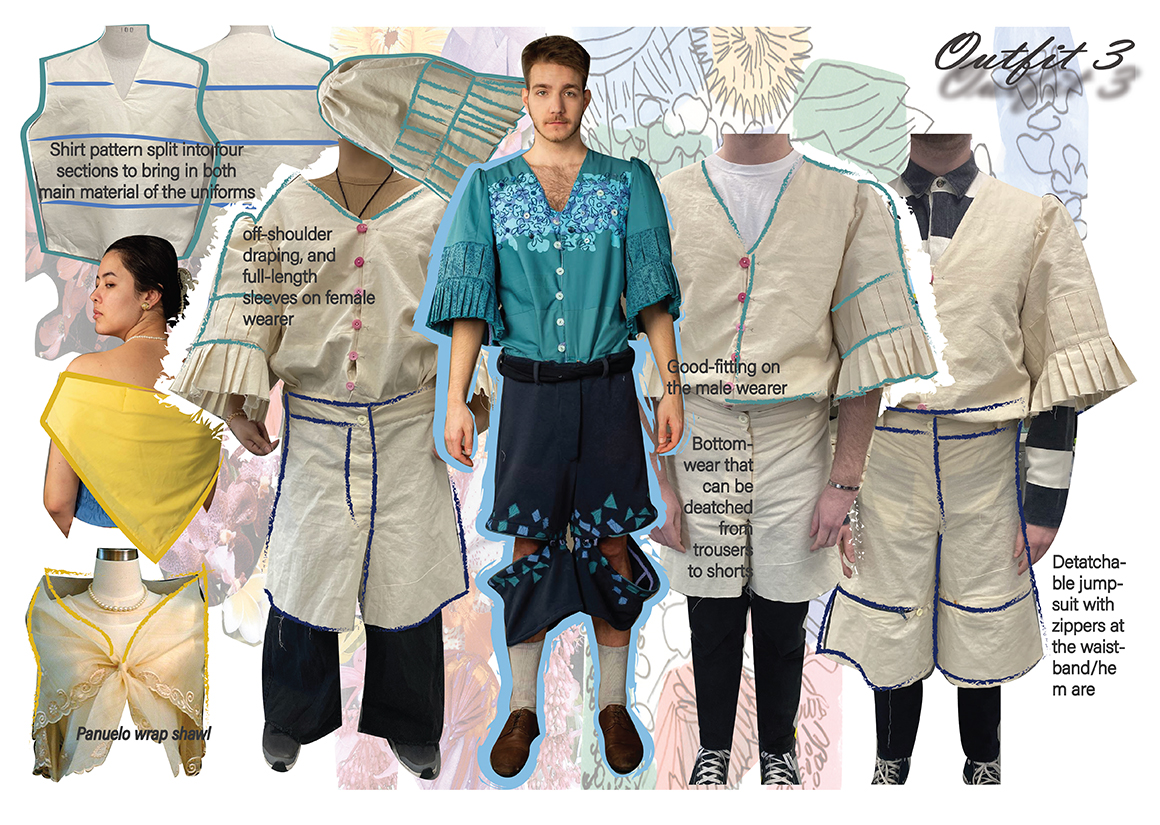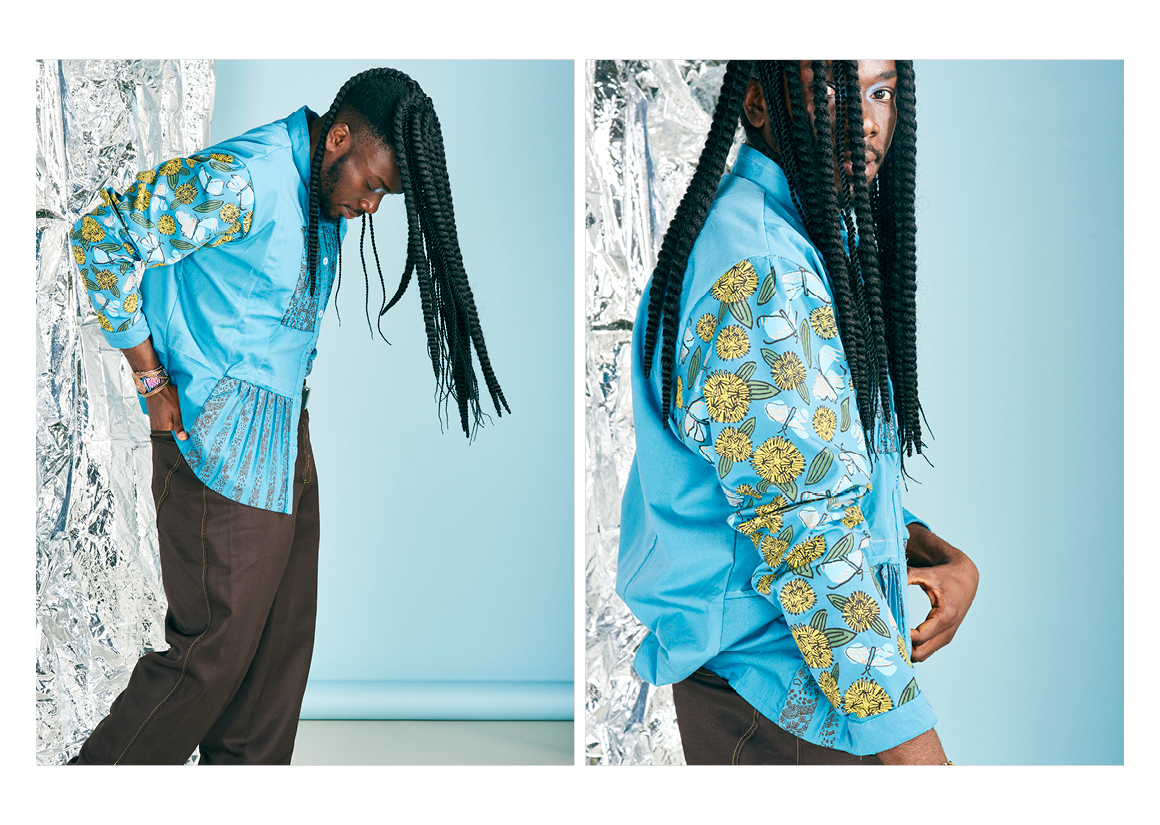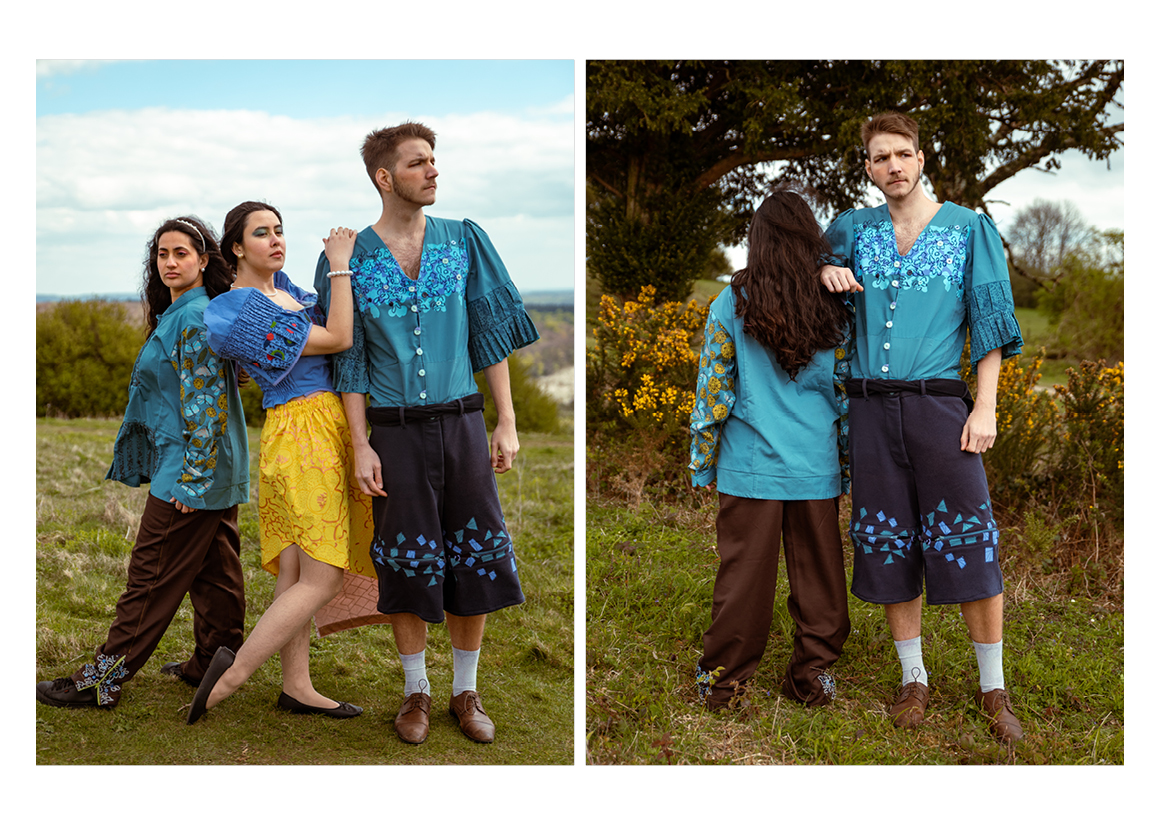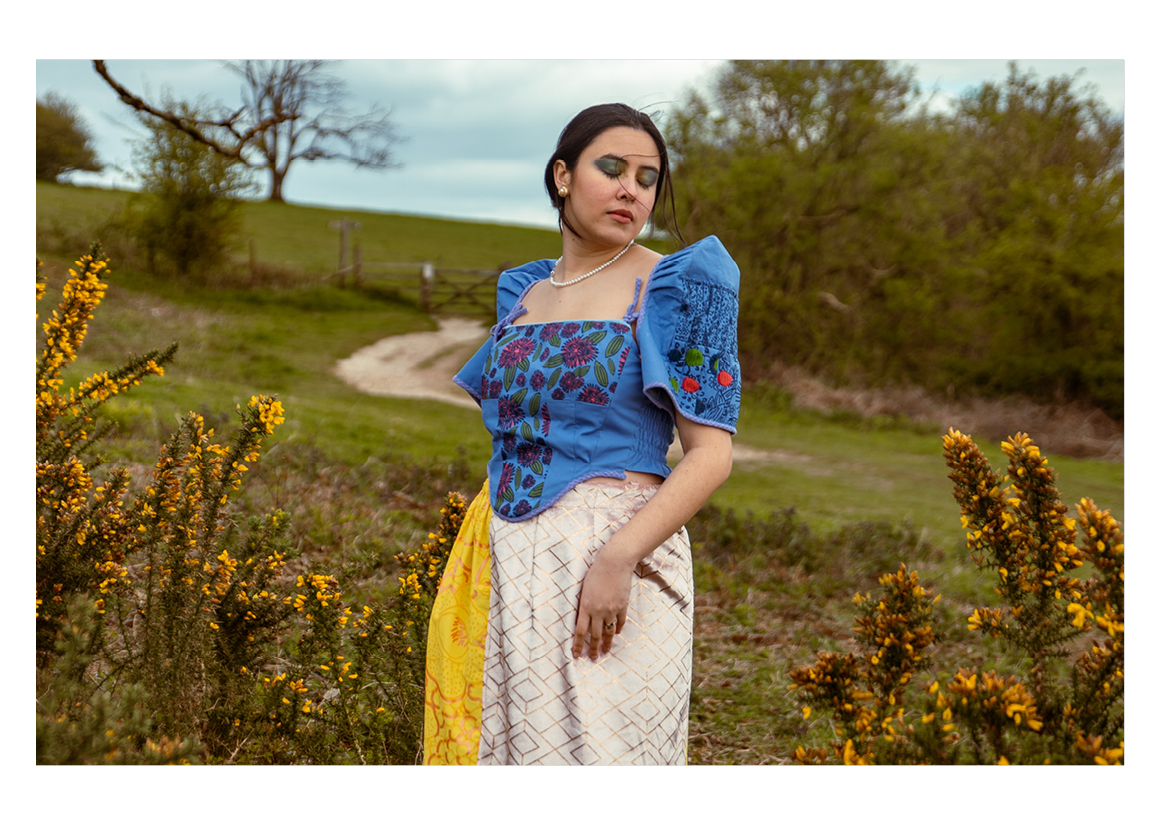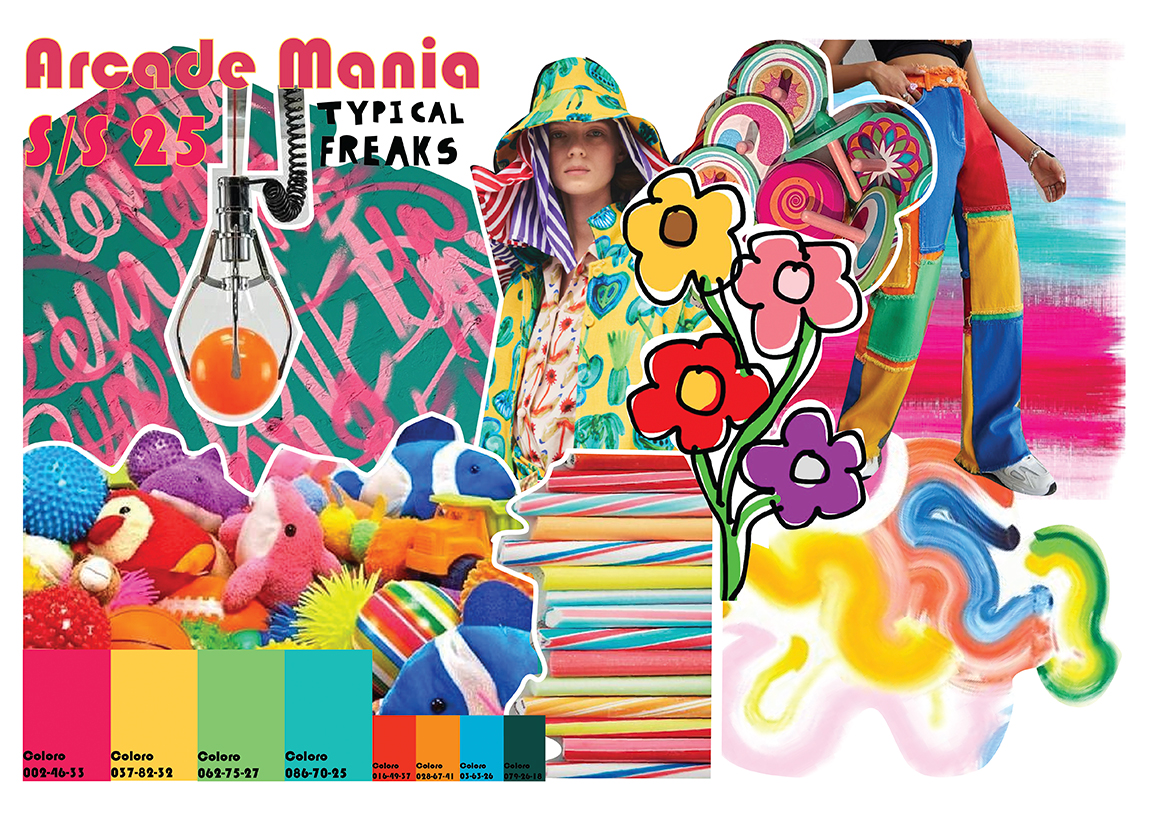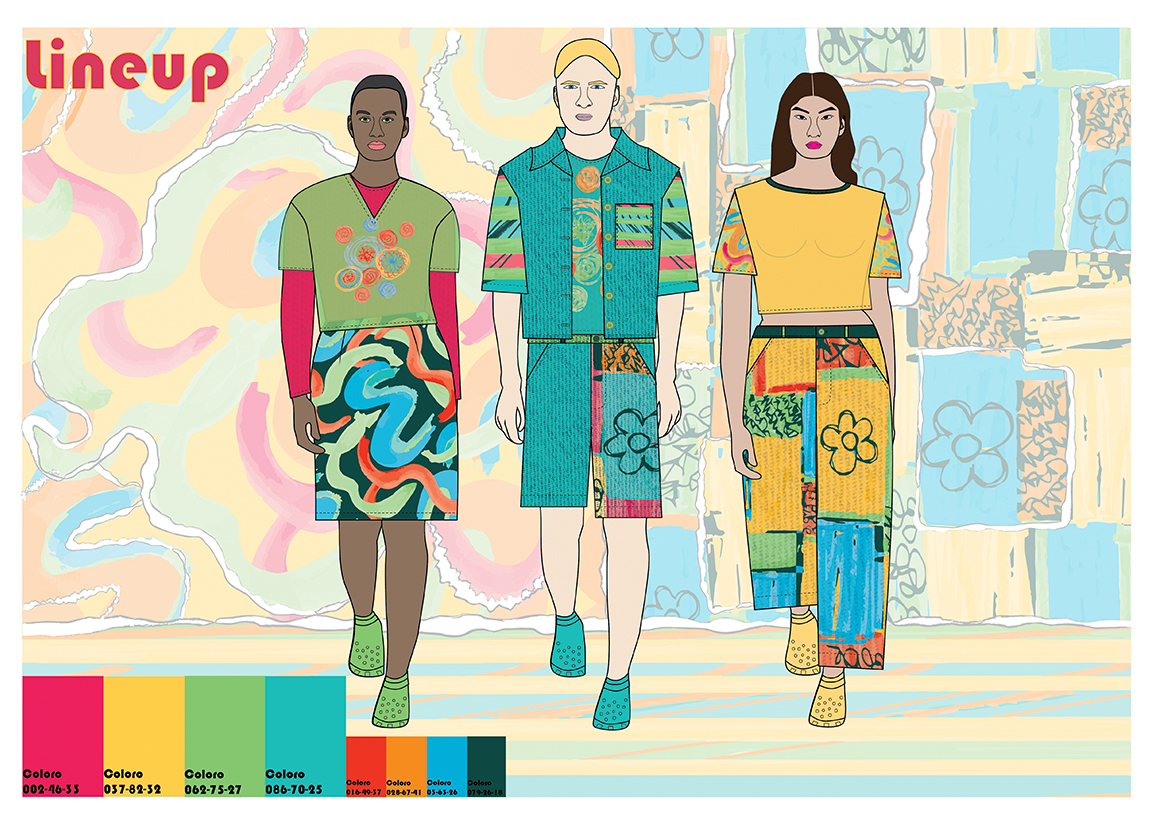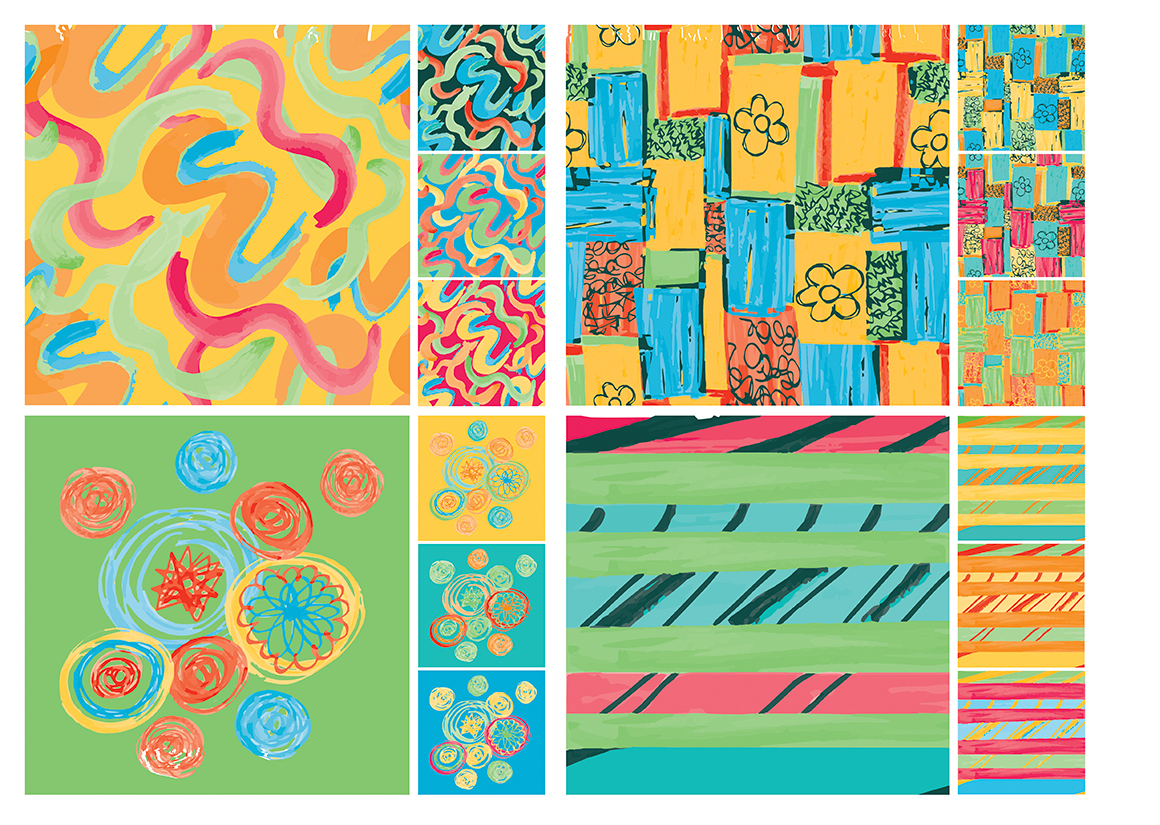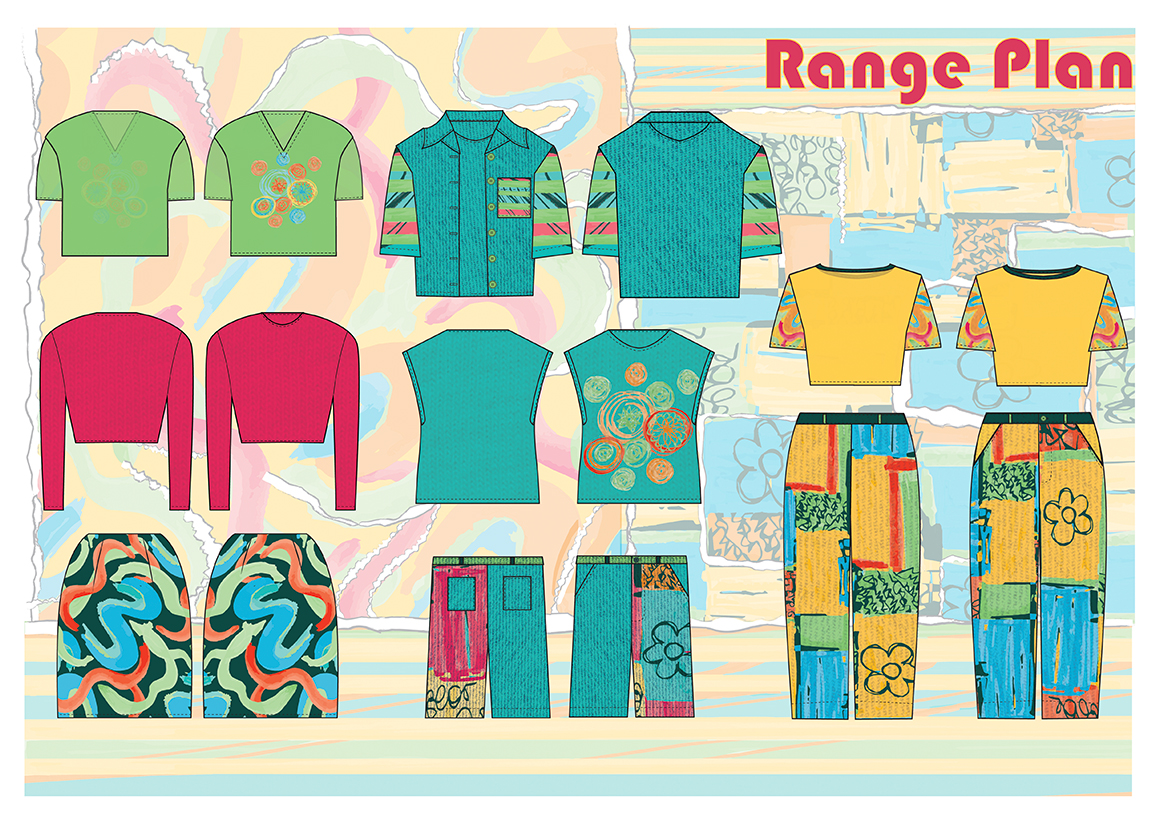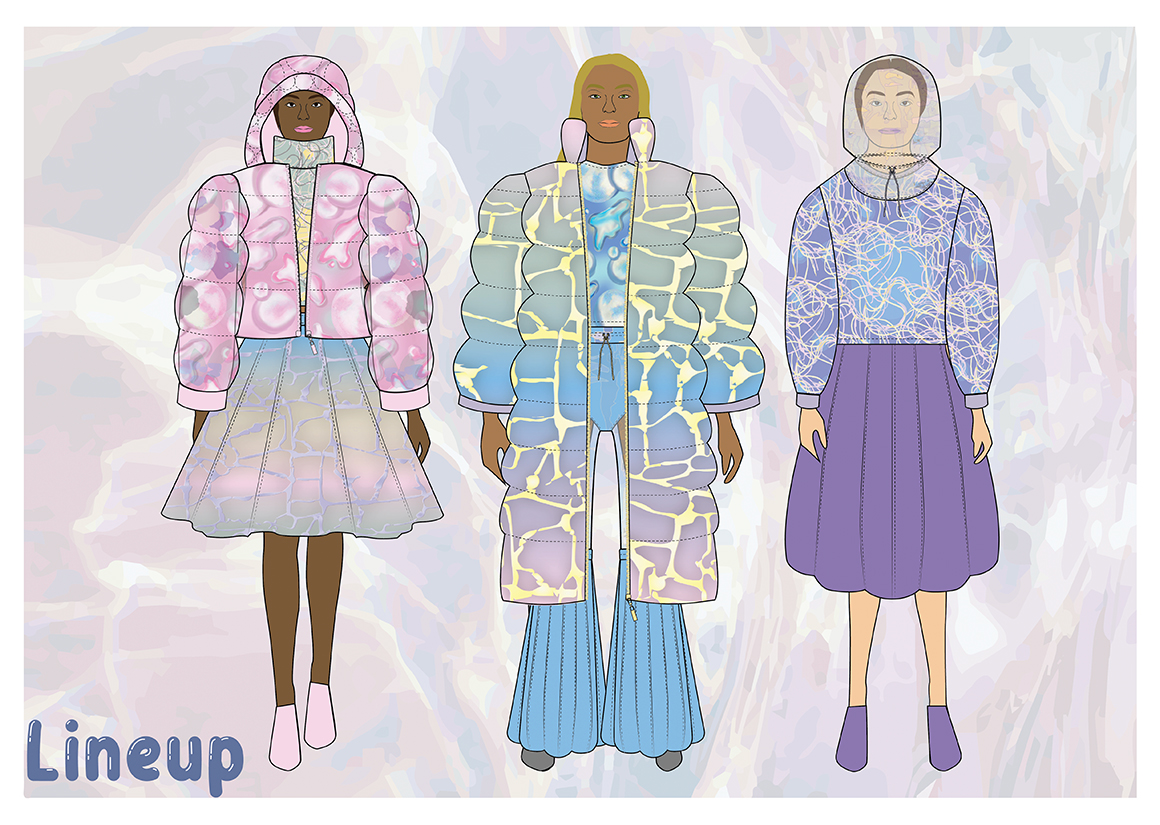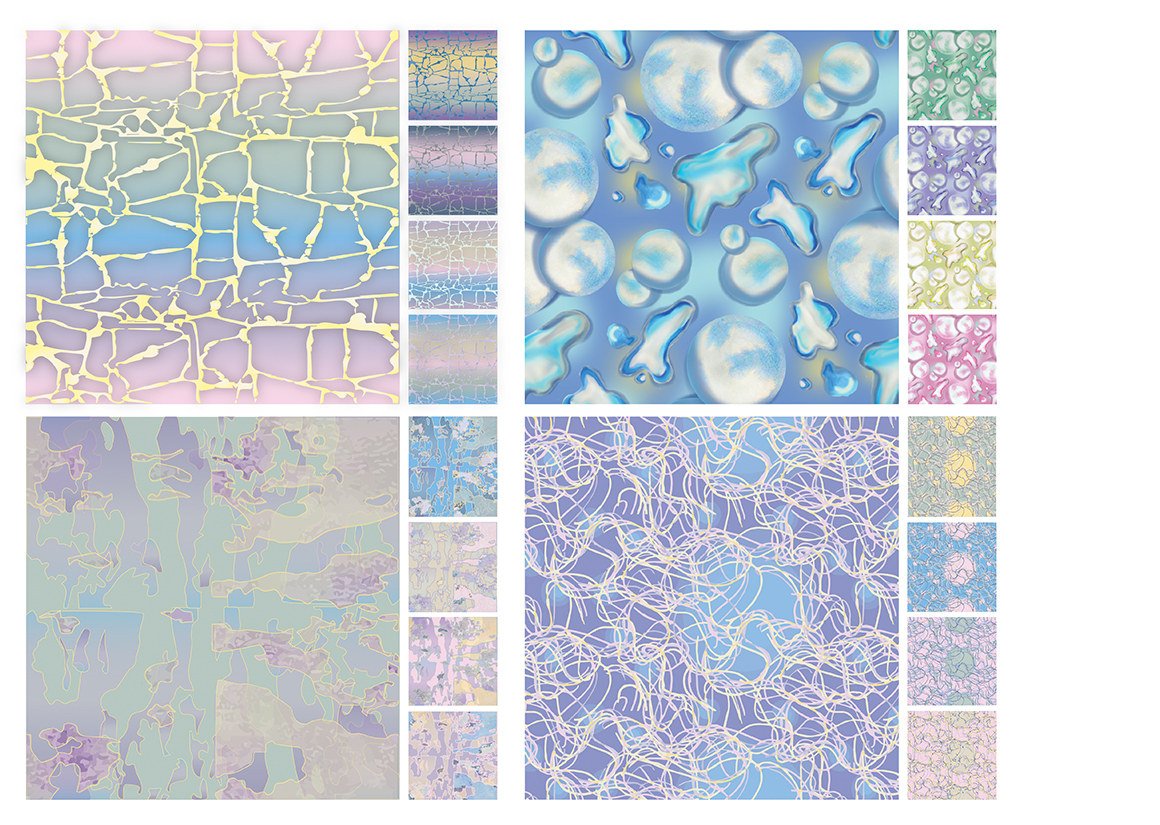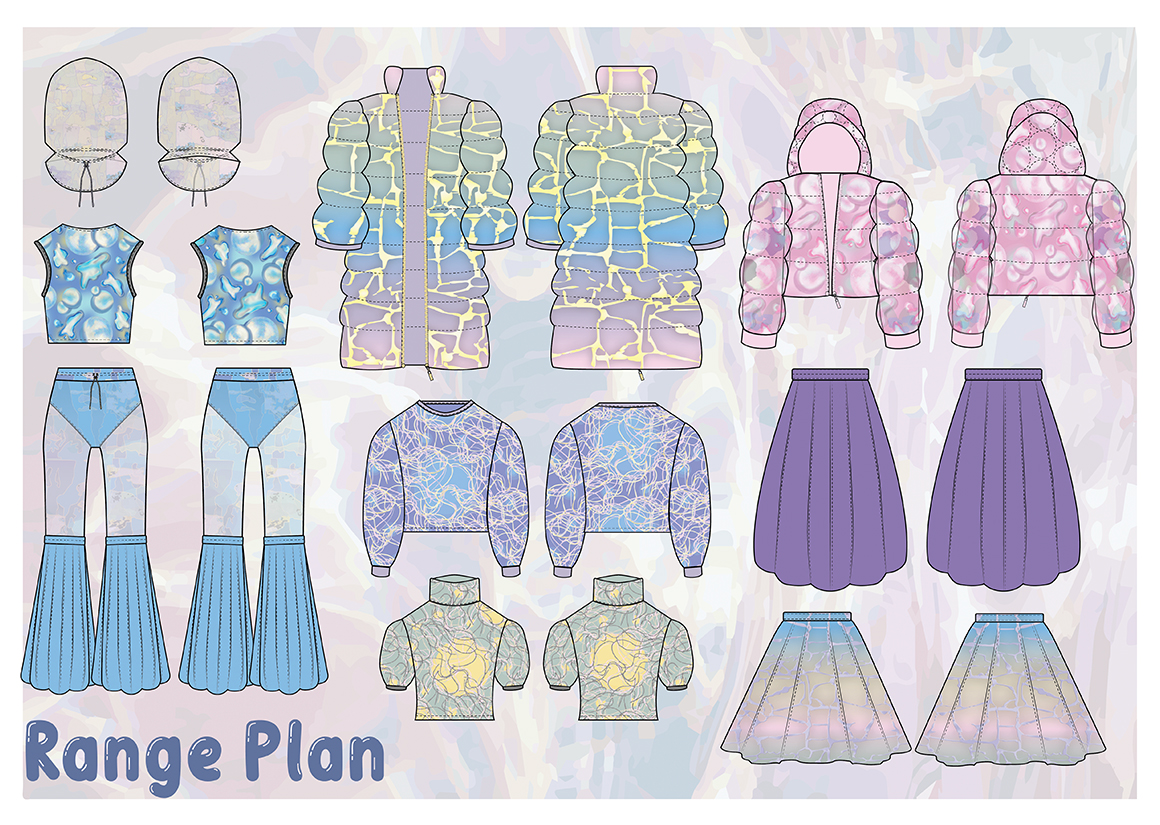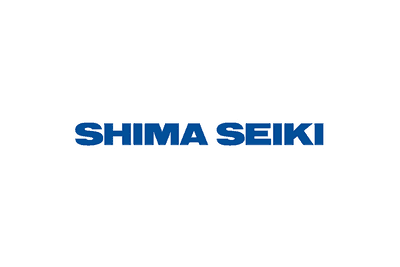
About Me
I'm Julia. A Fashion and Textile graduate from Portsmouth University
Julia San Diego is a fashion and textile designer, who uses her cultural background to create a timeless collection, specialising with textile printing and zero-waste practices. From the traditional silhouettes to the colourful motifs embedded to her garments, her work explores modularity, body and gender inclusivity, with consciousness on the environment.
Fom Textiles in Year 7 up to a three-year degree in Fashion and Textiles Design, my current skills with screen printing and basic sewing were enhanced. Furthermore I have gained a wider range of skills, such as CAD, pattern making, garment construction, embroidery and illustrations. Throughout my studies I have learned to practise how I could improve issues the fashion industry currently faces. With a conscious mind to follow the sustainable practice, I ensure to utilise every material to enhance the lack of resources I have from spending more money towards the design process in my work.
INSPIRATION
Sharing and appreciating culture, diversity, and the environment
Mahal kong Maganda showcases my own Filipino culture and heritage, mixing with the love and beauty of nature, colour, fashion and materials whilst addressing the global issues impacted within the fashion industry, such as landfill waste and the lack of gender inclusivity, body image and diversity. With dead stock fabrics and organic motifs embedded in my work, I hope that my collection will raise awareness of the environmental issues and to appreciate everything within the precious world we live in.
Mahal kong Maganda uses secondhand fabrics, including local hospital and school uniforms that my family have discarded due to being upgraded or grown out of, these would have otherwise entered the textile waste stream. These were then transformed into traditional silhouettes, with Spring/Summer colours and embellished botanical screen prints with embroidery. The garments were also modernised to adjust different body sizes and can be worn in various ways to adapt more styles for each individual.
MY WORK
PORTFOLIOS
DETAIL
Mahal kong Maganda
Throughout my work, each garment is integrated through the use of modular and adaptable design that can be worn in various ways by any gender and body sizes. Following the essential sustainable practices into my work, I used deadstock, secondhand fabrics, including work and school uniforms my family no longer uses, to craft into traditional Filipino silhouettes. I took the opportunity to utilise every material I own to prevent landfill and ocean waste with minimal cost, and transform them into timeless pieces that are worn with love and appreciation in the craftsmanship and the culture legacy. This collection hopes to raise awareness on various issues within the fashion industry while helping to appreciate what we have.
